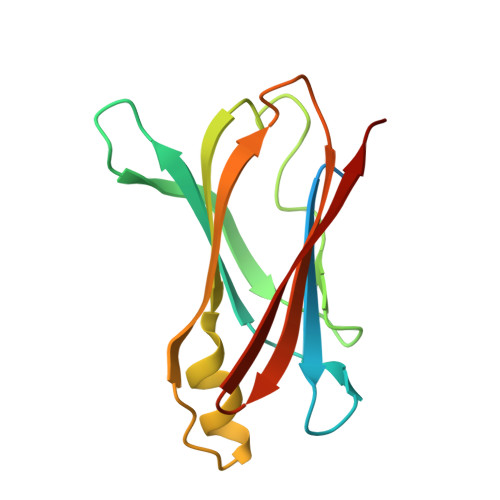Synthesis and structural analysis of halogen substituted fibril formation inhibitors of Human Transthyretin (TTR).
Ciccone, L., Nencetti, S., Rossello, A., Stura, E.A., Orlandini, E.(2016) J Enzyme Inhib Med Chem 31: 40-51
- PubMed: 27067161
- DOI: https://doi.org/10.3109/14756366.2016.1167048
- Primary Citation of Related Structures:
5E23, 5E4A, 5E4O - PubMed Abstract:
Transthyretin (TTR), a β-sheet-rich tetrameric protein, in equilibrium with an unstable amyloidogenic monomeric form is responsible for extracellular deposition of amyloid fibrils, is associated with the onset of neurodegenerative diseases, such as senile systemic amyloidosis, familial amyloid polyneuropathy and familial amyloid cardiomyopathy. One of the therapeutic strategies is to use small molecules to stabilize the TTR tetramer and thus curb amyloid fibril formation. Here, we report the synthesis, the in vitro evaluation of several halogen substituted 9-fluorenyl- and di-benzophenon-based ligands and their three-dimensional crystallographic analysis in complex with TTR. The synthesized compounds bind TTR and stabilize the tetramer with different potency. Of these compounds, 2c is the best inhibitor. The dual binding mode prevalent in the absence of substitutions on the fluorenyl ring, is disfavored by (2,7-dichloro-fluoren-9-ylideneaminooxy)-acetic acid (1b), (2,7-dibromo-fluoren-9-ylideneaminooxy)-acetic acid (1c) and (E/Z)-((3,4-dichloro-phenyl)-methyleneaminooxy)-acetic acid (2c), all with halogen substitutions.
- a Dipartimento di Farmacia , Università di Pisa , Pisa , Italy and.
Organizational Affiliation:

















